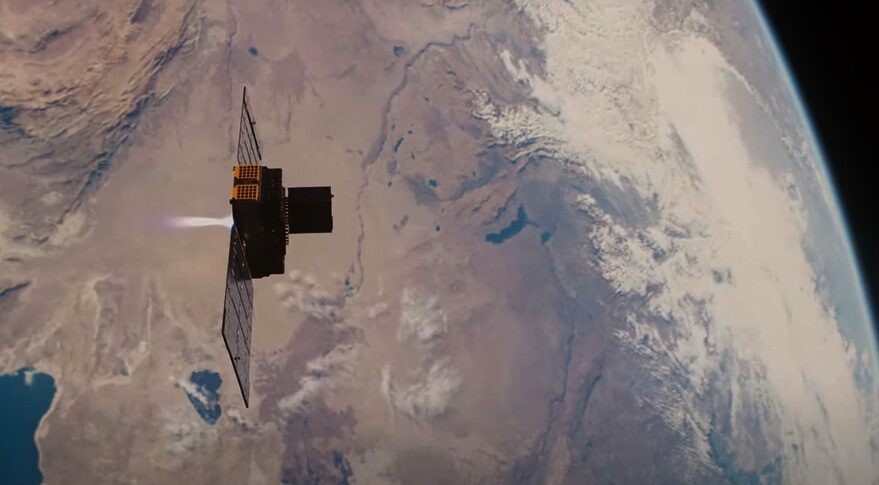
Momentus to cut costs as it prepares for next Vigoride mission (Image Credit: Space News)
LOGAN, Utah — In-space transportation company Momentus plans to reduce spending to conserve cash while moving ahead with its next series of tug missions.
Momentus announced Aug. 11 that its next mission, called Vigoride-5, remains on schedule for a launch on the SpaceX Transporter-6 rideshare mission in November as the company implements fixes in the vehicle’s design after the Vigoride-3 tug suffered problems after its launch.
“Right now, we’re on track to launch in November,” said John Rood, chief executive of Momentus, on an earnings call to discuss the company’s second quarter financial results. “We do have a tight schedule to prepare the Vigoride vehicle.”
An investigation into the problems with Vigoride-3, which failed to properly deploy its solar panels after launch in May, traced that problem to a mechanical issue with a holddown bracket and connector pin that did not release as intended, Rood said. Body-mounted solar panels are working, but alone don’t produce enough power for normal spacecraft operations.
He said that the solar panel deployment mechanism was tested on the ground “dozens of times” before launch. However, a component of that mechanism had “an unknown design flaw and it differed from the test equipment that performed the ground tests on the deployable solar arrays” on that vehicle.
Vigoride-3, in addition to producing far less power than planned, has also suffered communications issues. Momentus has not been able to establish two-way communication with the spacecraft since late May when the spacecraft was able to deploy two smallsats. Controllers since then have been broadcasting commands into the blind. The tug deployed four more satellites in July, with three more yet to be deployed.
Rood said that the company is implementing “enhanced ground testing” on Vigoride-5 “to make sure that the corrective actions we’ve implemented to address the anomalies we experienced on Vigoride-3 are accomplished.”
In addition to Vigoride-5 flying on Transporter-6, Momentus has reserved ports on three Transporter launches in 2023 for additional Vigoride missions, although Rood only mentioned working on Vigoride-5, 6 and 7. “Getting these three missions right over the next 10 months is the highest priority for our company in the framework of our available cash,” he said.
Momentus reported negligible revenue in the second quarter and a net loss of $22.9 million. The company ended the quarter with $109 million of cash and cash equivalents.
The company used the earnings release to announce plans to cut costs to stretch out its remaining cash. “With these reductions, we now estimate that the cash on our balance sheet should carry us through the end of 2023,” Rood said. While he did not rule out trying to raise more capital, “we believe it’s prudent to plan to extend our existing cash runway given the state of the capital markets.”
Those cuts include operational efficiencies and reducing overhead, although the company did not disclose if that meant reducing staff. Momentus also plans to reduce research and development spending on a reusable version of Vigoride that would remain in orbit and perform multiple missions.
A reusable Vigoride is still in the company’s plans, Rood said, but “we think it makes sense to reduce company-funded spending on R&D projects like this with longer time frames to produce results in order to conserve cash and extend our runway.” That vehicle would not have been ready before the middle of the decade under its previous spending plans, he added.
Those cost reductions, he said, will not affect work on the next three Vigoride spacecraft. “You’ll begin seeing additional cost reductions following those launches.”








